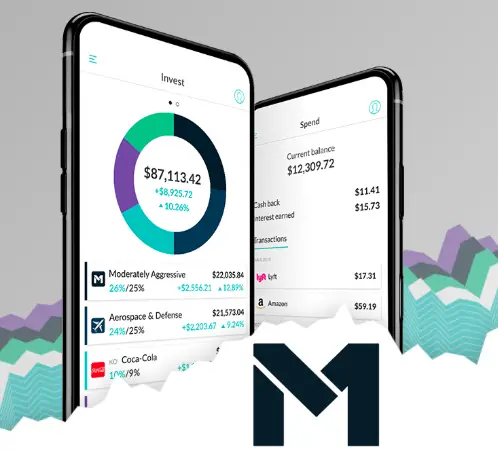What Is A Solo-401k And How Does It Work?
Table of Contents
What is a Solo-401k?
A solo-401k is a type of retirement account that is similar in nature to the regular 401k. The biggest difference is that while regular traditional and Roth 401ks are employer-sponsored retirement accounts, solo-401ks are a type of 401k that you can open when self-employed. The solo-401k also has the option of choosing between a traditional and Roth version of the account. Also, while employer 401ks have a pretty high contribution limit of $19,500 for the year 2021 solo-401ks have a significantly higher contribution limit.
Solo-401ks have the same benefits tax-wise depending on whether you choose to open a traditional or a Roth solo-401k. So opening and contributing to a traditional one means that you can deduct all of those contributions to it from your total taxable income for that particular year.
However, when you reach the official retirement age and start making withdrawals from it you have to pay regular income taxes on that money. Opening and contributing to a Roth solo-401k means that you pay taxes on all of the money you contribute to it, but when you reach the official retirement age, all of the money you invested inside it is 100% tax-free.
What are the benefits of using a Solo-401k?
A solo-401k is a type of retirement account that you can open all on your own without having to rely on an employer-sponsored plan. Similar to the SEP-IRA, the self-employed version of an IRA, all you need to do in order to open one is open and own your own business, whatever that might be.
If you’re interested in opening your own business you’ll need a business EIN in order to do so. You can click on the link here to see this website’s article on how to do so. – Business EIN – What’s The First Thing You Need When Starting A Business?
You’ll need a business EIN in order to open your own Solo-401k. One of the potential benefits of them is the flexibility to choose how you want to deal with your tax obligation. This means that you can actually make contributions to one as either the “employer” or the “employee”. In a traditional solo-401k plan, all contributions you make as the “employer” will be tax-deductible to your business with any earnings growing tax-deferred until withdrawn.
But for contributions, you make as an “employee” you have more flexibility. Typically, your employee contributions reduce your personal taxable income for the year and can grow tax-deferred, with distributions in retirement taxed as ordinary income. You can also make some or all of your employee contributions in a Roth solo-401k plan. These Roth employee contributions do not reduce your current taxable income, but your distributions in retirement are 100% tax-free.
What are the contribution limits of a Solo-401k?
The contribution limits or regular 401ks are already pretty high at $19,500 for 2021. However, the solo version has an even higher contribution limit than that. There are different contribution limit rules depending on whether you contribute as an “employer” or an “employee”. When you contribute to one as an employee, you are allowed up to the same amount as the employer-sponsored 401ks, which is $19,500 or 100% of compensation (whichever is less) for 2021.
If you are over 50, an additional $6,500 catch-up contribution is allowed. This is the type of contribution that can be made as traditional, Roth, or a combination of both. As the employer, you can make contributions up to 25% of your compensation from your business with the absolute limit being up to $58,000 for 2021.
When adding the employee and employer contributions together for the year the maximum 2021 contribution is $58,000. This means that the limit of $58,000 in contribution limits is a shared one across all of your solo-401k accounts no matter how many you have, which type they are, or if you contribute as both an “employer” and “employee”, so keep that in mind.
Another important thing to keep in mind is that if you’re side-gigging, employee 401(k) limits apply by person, rather than by plan. That means if you’re also participating in an employer-sponsored 401k at your day job, the limit applies to contributions across all plans, not each individual plan. If you are age 50 and older you can make “catch-up” contributions and the limit is increased to be $64,500 for 2021.
How to open a Solo-401k?
In order to open a Solo-401k, you have to own your own business. Moreover, a Solo-401k can only be opened by business owners that have no employees that are eligible to contribute to the plan. When opening one up, you will set up your plan eligibility requirements in the Solo 401(k) plan documents used to establish your plan with whichever investment brokerage that you decide to open it with.
The only exception to the eligibility requirements needed for an employee to contribute to a Solo-401k account would be the business owner’s spouse. A business owner’s spouse is eligible to contribute up to $19,500 for 2021 if the spouse works for and earns an income from the owner’s business.
What brokerages allow you to open a Solo-401k?
The Solo-401k is probably one of the least talked about and leased used retirement plans because compared to other types of investment accounts, and is offered by noticeably fewer brokerages. The SEP-IRA, the self-employed IRA counterpart to the 401k is offered more often, even at brokerages like M1 Finance.
There are a few brokerages out there that do offer the option to open your own Solo-401k like TD-Ameritrade, Charles Schwab, Vanguard, and a few others. There are even some companies like Solo401k.com that offer you the ability to invest directly in real estate, precious metals, private equity, private lending, startups, Bitcoin, and other cryptocurrencies in addition to stocks, bonds, and ETFs.

Disclaimer: I am not any sort of investment or financial professional giving any sort of legal advice. I’m just some guy trying to teach other people about how they might navigate the financial world.







Hi! Thiis iss kkind of ooff topic butt I need sme guidance
from aan establishhed blog. Is it very difficult tto sett up your owwn blog?
I’m not veryy techincal but I ccan fijgure tbings out
pretty fast. I’m thinking about settng upp mmy oown but I’m nott sure where to start.
Do yoou hage any iideas oor suggestions? Many thanks